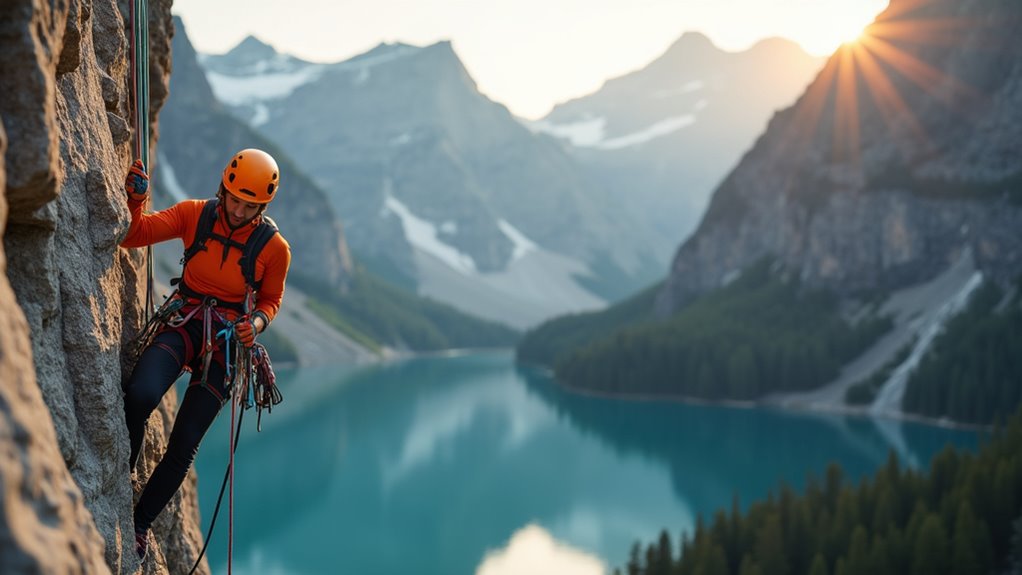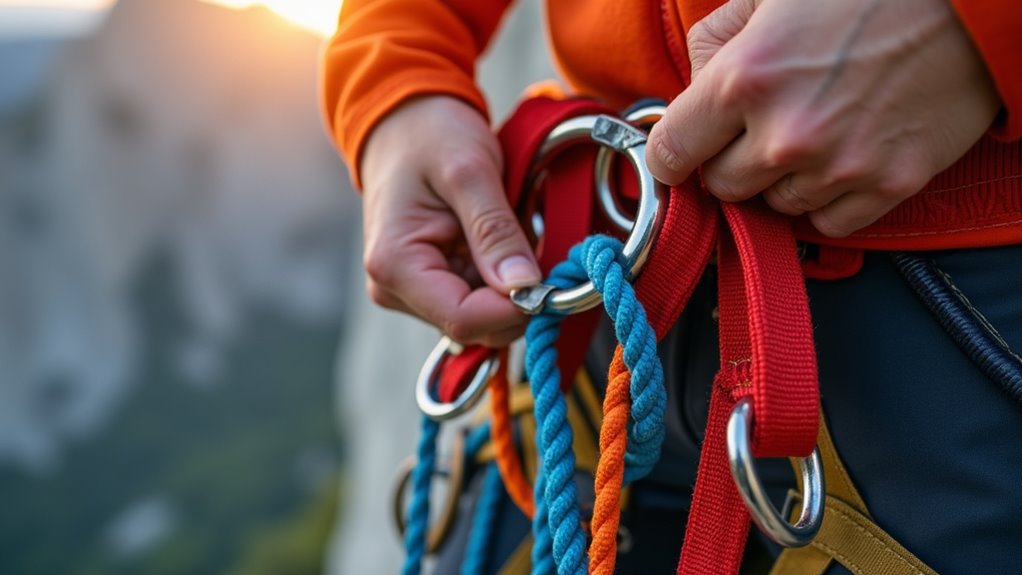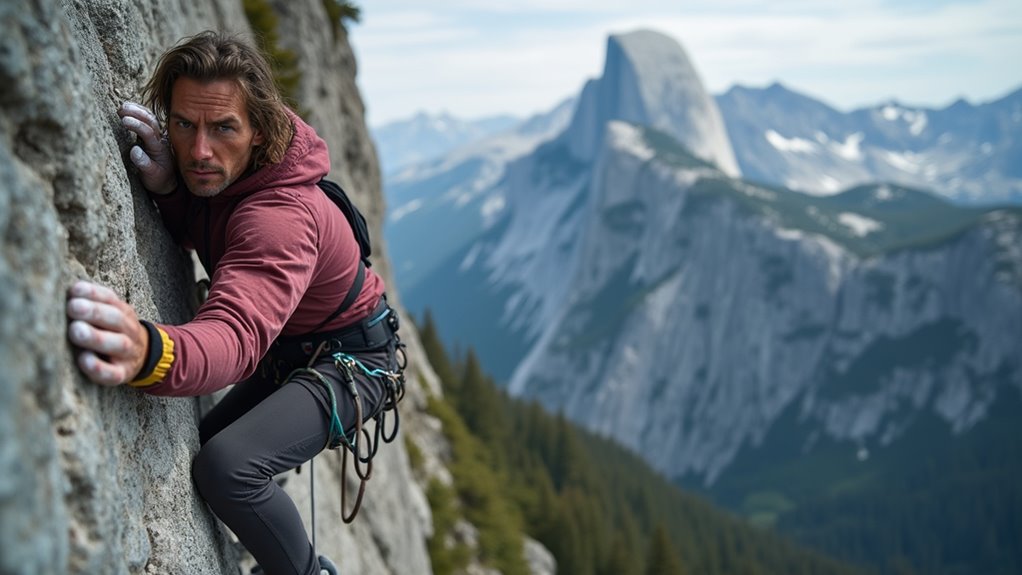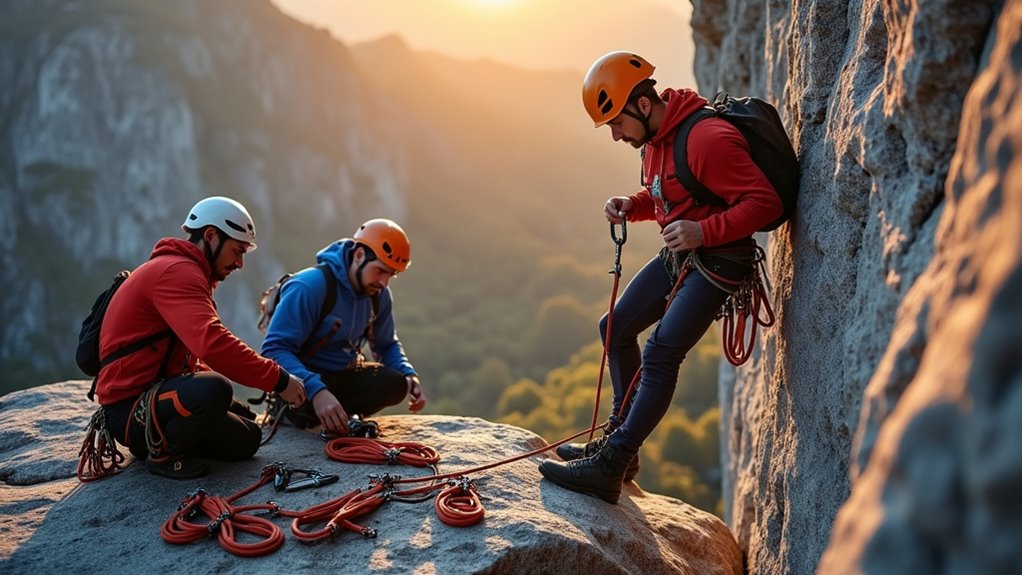Physical Address
304 North Cardinal St.
Dorchester Center, MA 02124
Physical Address
304 North Cardinal St.
Dorchester Center, MA 02124

Heading up those rock faces requires mastering five essential safety protocols that separate survivors from statistics—discover what experienced climbers never skip.
Are you ready to conquer those towering rock faces that’ve been calling your name? Climbing offers an incredible rush, but it’s not a sport where you can wing it and hope for the best. Your safety depends on following proven protocols that separate experienced climbers from weekend warriors who end up in trouble. Before you chalk up your hands and tie into that rope, there are five critical safety principles that’ll determine whether your adventure becomes an epic success or a cautionary tale.

Before you even touch the rock face, your life depends on the reliability of every piece of equipment you’re carrying. Make inspecting your gear a non-negotiable ritual.
Check your harness for frayed webbing, worn buckles, and proper threading.
Examine your helmet for cracks or damaged straps.
Inspect carabiners for gate function and sharp edges that could cut your rope.
Run your hands along every inch of rope, feeling for cuts, flat spots, or core damage.
Test your belay device’s moving parts and confirm it’s compatible with your rope diameter.
Don’t forget smaller items like quickdraws and slings.
Just like when choosing the perfect canoe requires careful consideration of multiple factors, selecting climbing gear demands the same methodical approach to ensure your safety.
This five-minute inspection could save your life, so never skip it regardless of how enthusiastic you’re to start climbing.
Once your equipment passes inspection, clear communication becomes your lifeline on the rock. You’ll need standard climbing commands that both you and your partner understand completely. Practice essential calls like “On belay,” “Climbing,” “Slack,” and “Take” until they’re automatic responses.
Don’t mumble or shout—speak clearly and wait for confirmation before proceeding.
Establish backup signals for windy conditions or when distance makes verbal communication difficult. Simple rope tugs can indicate “safe” or “need slack.” Before starting your route, agree on what each signal means.
Always repeat important commands back to confirm understanding. If you can’t hear your partner clearly, don’t guess—ask them to repeat. Miscommunication kills climbers. When in doubt, stop climbing and clarify before continuing upward.
Whether you’re climbing during a camping trip or at a dedicated climbing area, maintaining consistent communication protocols ensures safety across all climbing environments.

While ego might tempt you to tackle that intimidating overhang, honest self-assessment keeps you alive on the rock. Start with routes well below your maximum grade and gradually progress as your skills develop. You’ll build confidence and technique more effectively than jumping into challenges you’re unprepared for.
Research routes beforehand using guidebooks and online resources. Pay attention to protection quality, rock conditions, and descent options. If you’re unsure about a route’s difficulty, ask experienced local climbers or guides for their input.
Don’t let peer pressure push you beyond your comfort zone. It’s perfectly acceptable to back down from a climb that feels too advanced. Every experienced climber has retreated from routes, and living to climb another day is always the smarter choice.
One of the most dangerous mistakes climbers make is attempting routes that exceed their skill level, which can lead to serious accidents and injuries.
Even though you’ve chosen an appropriate route, dangerous conditions can turn a manageable climb into a death trap. Before you start climbing, examine the rock quality carefully. Look for loose stones, cracks, or crumbling sections that could give way under pressure. Test holds gently before committing your full weight.
Weather assessment is equally critical. Check forecasts for sudden storms, temperature drops, or high winds that could catch you mid-climb. Rain makes rocks slippery and dangerous, while lightning poses serious risks on exposed faces.
If conditions look questionable, don’t hesitate to postpone your climb. Just as with underwater adventures, having the right essential gear can make the difference between a successful outing and a dangerous situation.

Despite your best efforts to assess conditions and choose safe routes, emergencies can still happen on the rock. That’s why you’ll want to practice rescue techniques before you need them.
Start by learning self-rescue skills like escaping a belay, rappelling past a knot, and ascending a fixed line. You should also master partner rescue methods, including lowering an injured climber and hauling systems.
Master both self-rescue techniques and partner rescue methods before you need them on the rock.
Don’t just read about these techniques—practice them regularly in controlled environments. Set up mock scenarios at your local crag or climbing gym. Practice until muscle memory kicks in, because adrenaline can cloud your thinking during real emergencies.
Consider taking a wilderness first aid course and rescue clinic. These safety tips are essential knowledge that every climber should master before heading out on challenging routes. The more prepared you are, the more confidently you’ll climb.
You’re now armed with the essential tools to conquer those towering peaks safely. Remember, climbing isn’t just about reaching the summit—it’s about returning home with stories to tell. Don’t let overconfidence become your Achilles’ heel; respect the mountain and it’ll respect you back. Trust your preparation, communicate clearly, and never push beyond your limits. The rock will always be there tomorrow, but you’ve got to be there to climb it.